Hosted by the Laguna Beach Water District, a Celebration of Life for Susan Trager Announcement is presented below.
Link to the Celebration of Life Announcement Flyer or click on the above image.
News and opinion on California water law and policy
09 Jun 2011 Leave a comment
Hosted by the Laguna Beach Water District, a Celebration of Life for Susan Trager Announcement is presented below.
Link to the Celebration of Life Announcement Flyer or click on the above image.
09 Jun 2011 Leave a comment
The following is a transcript of the comments made in the Superior Court of the State of California – for the County of Los Angeles – Department 316 – Hon. Jack Komar presiding. We thank Judge Komar and the attorneys present in the court who acknowledged the passing of one of their colleagues.
March 24, 2011 – In Solemn Memory of Susan Trager
The following is Resolution 2011-5 adopted during the April Board of Directors Meeting of the San Luis Rey Municipal Water District. We thank Vic Pankey, Bill Pankey and Directors Veysey, Fritz, and Yarger for their kind words of appreciation in remembering their District Legal Counsel of 30 years.
Resolution 2011-5 Commemorating the Late Susan Trager
The following is a modified page of the Orange County Water Association April 2011 Newsletter Water Matters.
The following is a modified page of the Association of California Water Agencies April 2011 Newsletter ACWA News.
The following is a modified page of The Little Guild Spring 2011 Newsletter. The Little Guild of West Cornwall, CT is one of Susan’s favorite charities. We thank everyone who made a donation in the name of Susan Trager.
Spring 2011 Newsletter of The Little Guild
The following is a news article commenting on the “brilliant and tenacious water rights attorney Suasn Trager” in the selection of a new General Counsel for the Phelan Pinon Hills Community Services District.
30 Mar 2011 Leave a comment
Please scroll below the photo to access links to all published online articles on the passing of Susan. Links will be added if we discover additional tributes and/or news articles.

A Message from the Trager Family
Members of the Trager Family wish to extend their sincere appreciation for the outpouring of support and kind words of condolences we have received from the many friends and colleagues of Susan.
Our Family wishes to let everyone know that we are coordinating with the Laguna Beach County Water District in the planning of a Celebration of Life for Susan which will be held at a later date.
We wish to thank you all for your patience at this difficult time for us.
Laurie Trager, Frank Trager, Phil Trager, and Nettie Trager-Fuellenkemper
Private family services will be held in Connecticut.
Susan M. Trager – Obituary (with Guest/Memory Book)
The Orange County Register
Susan M. Trager – Obituary (with Guest/Memory Book)
Los Angeles Times
Water expert was first woman on Laguna Beach water commission
Laguna Beach Coastline Pilot
Property Rights Attorney Trager Dies
CalWatchDog
Water-Rights Attorney Dies
San Bernardino County Sun
Longtime Local Water Attorney and LB Water District Commissioner, Dies
Stu News Laguna
Susan Trager, noted water rights attorney, dies
The Orange County Register
Images, credentials, and notices from the extraordinary life of Susan Trager.
Click on SMT’s Card to launch a visual slideshow.
So, you want to be a big time Water Lawyer?
Compare your resume to this 1974 version from the personal files of SMT.
07 Feb 2011 Leave a comment
in Federal involvement Tags: Clean Water Act, Federal involvement, pollution, U.S. government, U.S. Supreme Court, water
 Lawyers rarely agree on anything, but here’s an exception: They all say the Supreme Court bungled Rapanos v. United States, a major wetlands case, almost five years ago.
Lawyers rarely agree on anything, but here’s an exception: They all say the Supreme Court bungled Rapanos v. United States, a major wetlands case, almost five years ago.
Attorneys representing all interested parties say lower court judges, regulators, the business community and individual landowners continue to suffer as a result of the confusion sown by the justices whose main job is to provide clarity in the law.
The case concerned the efforts of Michigan landowner John Rapanos to develop a property that, much to his dismay, was designated as a wetland. He hadn’t applied for a permit and was subsequently the target of U.S. EPA civil and criminal enforcement actions.
25 Jan 2011 Leave a comment
in Congress -- bills Tags: California, California water, Central Valley, Congress, Federal involvement, Jeff Denham
 Rep. Jeff Denham today expands his influence over the House debate on water issues and his ability to address California’s water crisis by joining the Subcommittee on Water and Power in the House Committee on Natural Resources. With a seat on the Water Resources and Environment Subcommittee in the Committee on Transportation and Infrastructure as well, Rep. Denham now has jurisdiction over many programs including the Army Corps of Engineers (Corps) and the Environmental Protection Agency (EPA) and the Bureau of Reclamation.
Rep. Jeff Denham today expands his influence over the House debate on water issues and his ability to address California’s water crisis by joining the Subcommittee on Water and Power in the House Committee on Natural Resources. With a seat on the Water Resources and Environment Subcommittee in the Committee on Transportation and Infrastructure as well, Rep. Denham now has jurisdiction over many programs including the Army Corps of Engineers (Corps) and the Environmental Protection Agency (EPA) and the Bureau of Reclamation.
The unemployment rates are consistently above the national average in the Central Valley. As a long time farmer in the area, Rep. Denham understands the immediacy of the water crisis and will remain committed to bringing water back to the Central Valley in order for farmers to grow crops and put people back to work.
24 Jan 2011 1 Comment
in Use of water Tags: California, California water, Delta, drought, water conservation
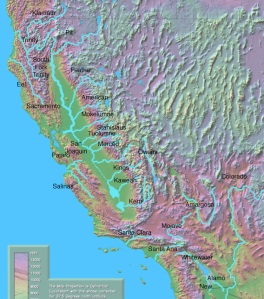 The powerful Westlands Water District recently withdrew its support for the Bay-Delta Conservation Plan, action that might light a fire under other water organizations in the state.
The powerful Westlands Water District recently withdrew its support for the Bay-Delta Conservation Plan, action that might light a fire under other water organizations in the state.
The bold action by Westlands indicates that it is no longer willing to put up with unwanted and unmerited federal interference in the conscientious efforts by water interests in California to make the best use of water.
Westlands’ concerns regarding political interference by the Department of the Interior and its creation of further water restrictions without scientific basis are well-justified. Among other questionable activities, this department has been criticized recently by federal and state legislators for holding secret meetings on its planning process and for manipulating science to support its drilling ban in the Gulf of Mexico, resulting in the loss of 12,000 jobs.
21 Jan 2011 Leave a comment
in Farm water Tags: California, California water, farmers, Federal involvement, water, water shortage, water supply
18 Jan 2011 Leave a comment
in Salton Sea Tags: California, California water, Colorado river, Nevada, water shortage
The evaporating Salton Sea is the flashpoint for the latest dispute in California’s water wars, testing an uneasy alliance of farmers and city dwellers to wean the state from reliance on Colorado River water.
California officials agreed in 2003 to stop taking more than its share from the Colorado, ensuring that Arizona and Nevada don’t get shortchanged. The plan’s centerpiece called for shifting enough water from the agricultural Imperial Valley to serve nearly 600,000 San Diego area homes.
The huge farm-to-city water transfer threatened California’s largest lake . More than 200 feet below sea level, the Salton Sea survives on water that seeps through the soil of Imperial Valley farms.
For seven years, the solution has been to pump enough water into the Salton Sea to offset what was lost to San Diego. The 350-square-mile lake is evaporating at a rate of roughly 450 million gallons a year, but the thinking was to prevent the San Diego transfer from hastening its demise.
18 Jan 2011 Leave a comment
in Use of water Tags: California, California water, Delta, farm water, water conservation, water waste
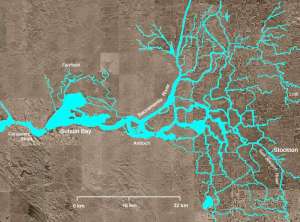 Delta Watermaster Craig Wilson will present a highly anticipated report to the State Water Resources Control Board on January 19 suggesting that a particularly contentious area of California water law, the California Constitution’s “Reasonable and Beneficial Use Doctrine,” be applied more broadly.
Delta Watermaster Craig Wilson will present a highly anticipated report to the State Water Resources Control Board on January 19 suggesting that a particularly contentious area of California water law, the California Constitution’s “Reasonable and Beneficial Use Doctrine,” be applied more broadly.
In his report, Wilson recommends that the State Board employ this doctrine to promote agricultural water use efficiency. The doctrine states a water right does not include the right to waste water and mandates that “the water resources of the state be put to beneficial use,” according to the Planning and Conservation League Insider (http://www.pcl.org).
A small percentage of increased agricultural water use efficiency adds up to significant water savings in California, according to Wilson. The report recommends that the State Board convene a “Reasonable Use Summit” to develop specific actions to improve efficiency and create a “Reasonable Use Unit” within the Division of Water Rights.
14 Jan 2011 Leave a comment
in AB 32 (Global Warming Law) Tags: AB 32, California water, global cooling, global warming, Prop. 23
 Two downtown office buildings were closed and hundreds of workers were sent home Wednesday because a nearly 100-year-old water main cracked in the cold weather.
Two downtown office buildings were closed and hundreds of workers were sent home Wednesday because a nearly 100-year-old water main cracked in the cold weather.
It was at least the 15th broken water main that the city Department of Utilities has responded to in downtown Sacramento in the past week, department spokeswoman Jessica Hess said.
Stretches of cold like the one the city has experienced over the past week put a strain on aging pipes in the downtown and midtown areas, Hess said.
“It’s pretty typical that we have a week or so where we’ve got an increased number of main breaks,” she said.
“It’s just the age of the pipes combined with the type of material and the cold that led to this.”
Read more: http://www.sacbee.com/2011/01/13/3320505/pipes.html#ixzz1B26YSP1Z
———————–
Comment: So much for “global warming,” just as the state government begins imposing AB 32, the Global Warming Solutions Act of 2006. The state government is more out of touch than usual.
11 Jan 2011 Leave a comment
in Farm water Tags: California water, Delta, farm water, water shortage
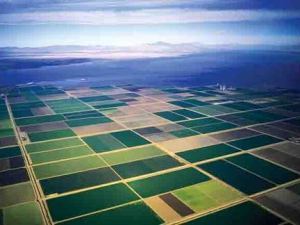 An expert says small changes in agricultural irrigation practices could eliminate wasteful water use.
An expert says small changes in agricultural irrigation practices could eliminate wasteful water use.
Delta Watermaster Craig Wilson says in a report being presented to the State Water Resources Control Board next week that California should crack down and aggressively enforce the state’s ban on wasteful water use.
The Los Angeles Times reports Tuesday that Wilson proposes broader enforcement of the state Constitution’s “reasonable use” doctrine rather than current case-by-case enforcement.
Read more: http://www.sfgate.com/cgi-bin/article.cgi?f=/n/a/2011/01/11/state/n054733S81.DTL#ixzz1AkUIlw4h
10 Jan 2011 Leave a comment
in Snowfall Tags: California, California water, mountains, Sierra Nevada, snow, water supply
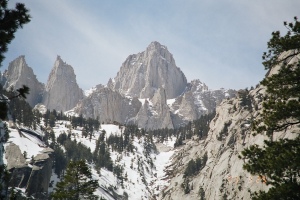 TRUCKEE – For weeks, the storms kept coming, one after another.
TRUCKEE – For weeks, the storms kept coming, one after another.
Now that the sky has cleared, Sierra Nevada residents are digging out to discover one of the most majestic and impressive debuts by winter in recent memory.
“The snow is just wonderful,” said Elizabeth Carmel, a professional photographer and co-owner of the Carmel Gallery in Truckee. “To have all that we’ve had at this time of year, it’s definitely a winter to treasure.”
From Sequoia and Yosemite national parks to Lake Tahoe, the mountain range is draped in a shimmering blanket of snow up to 18 feet deep in some places. The bounty of moisture is expected to yield lush wildflower blooms, healthier forests and fuller-than-normal reservoirs this year.
Read more: http://www.sacbee.com/2011/01/10/3311858/heavy-sierra-snowfall-translates.html#ixzz1AgTJUKjz
10 Jan 2011 Leave a comment
in CA Delta Tags: California water, Central Valley, Delta, Los Angeles, San Diego, Susan Trager
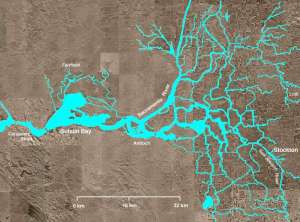 1,300 miles of ancient, earthen levees protect and encircle the Sacramento Delta. Some say this leaves the area, and its crucial water supply vulnerable to an earthquake. Others opine that the levees are sturdy enough. That something seemingly as simple as agreement over the safety of levees can’t be reached is a telling indication of how politically contentious the Delta is. It’s been this way for decades too.
1,300 miles of ancient, earthen levees protect and encircle the Sacramento Delta. Some say this leaves the area, and its crucial water supply vulnerable to an earthquake. Others opine that the levees are sturdy enough. That something seemingly as simple as agreement over the safety of levees can’t be reached is a telling indication of how politically contentious the Delta is. It’s been this way for decades too.
It’s all about the water, and who will control it and where will it go. Delta residents and environmentalists have somewhat overlapping interests. They want most of the water to stay in the Delta so the wildlife, fish, and birds will be protected and the area remains a natural resource. In opposition to them, but hardly allies, are farming interests in the Central Valley and the Los Angeles / San Diego water-devouring monsters to the South. Everyone wants that water, and more than a few of the players are politically connected with major financial resources. Add to that a multiplicity of federal, state, and local agencies with regulatory power over the Delta and you get a rather complicated game indeed, and one which is played using brass knuckles. The politics of water in California has always been a barely disguised street fight.
07 Jan 2011 Leave a comment
in Klamath River Tags: California, California water, EPA, Federal involvement, Klamath River
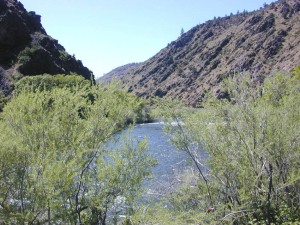 The federal government has approved a state plan that calls for significant reductions in pollution from agricultural runoff and dam operations on the Klamath River, setting the stage for a long-awaited cleanup of one of California’s major salmon rivers.
The federal government has approved a state plan that calls for significant reductions in pollution from agricultural runoff and dam operations on the Klamath River, setting the stage for a long-awaited cleanup of one of California’s major salmon rivers.
The new water quality standards are intended to help restore a river once home to bountiful salmon runs but more recently known as a polluted, water-starved battleground for farmers, tribes and salmon fishermen.
04 Jan 2011 Leave a comment
in Contamination Tags: California water, chromium-6, contamination, water
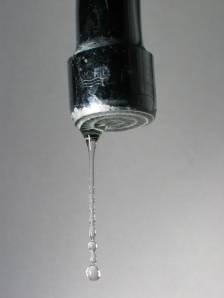 California, often an environmental trendsetter, is proposing a strict public health goal to reduce chromium-6, a probable carcinogen, in tap water following a recent report about its prevalence in 31 U.S. cities.
California, often an environmental trendsetter, is proposing a strict public health goal to reduce chromium-6, a probable carcinogen, in tap water following a recent report about its prevalence in 31 U.S. cities.
The state, which proposed an initial goal in late 2009, issued a draft version last week of a much stricter voluntary standard for the chemical that was made famous in the 2000 Hollywood movie Erin Brockovich. It’s now seeking public comment before finalizing its goal.
The U.S. Environmental Protection Agency is considering whether to set a limit for chromium-6, also known as hexavalent chromium, in tap water. In 2007, the National Institutes of Health reported strong evidence that the chemical caused cancer in laboratory animals when consumed in drinking water.
03 Jan 2011 Leave a comment
in CA Delta Tags: California, California water, Delta, floods, levees
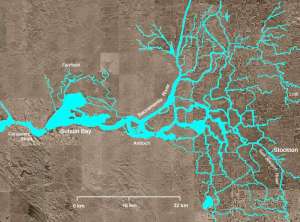 “Complaints are everywhere heard that the public good is disregarded in the conflict of rival parties.”
“Complaints are everywhere heard that the public good is disregarded in the conflict of rival parties.”
— James Madison, The Federalist, No. 10
Gilbert Cosio stands with his feet spread, one foot higher than the other, astride a sloping, 100-year-old levee surrounding Bouldin Island, 40 miles due south of Sacramento, Calif. We’re here to take a look at improvements that Cosio, a civil engineer, has made to this levee, part of a serpentine network of flood control infrastructure that was imposed piecemeal over the course of the 19th and 20th centuries on the largest estuary on the West Coast of the Americas, the Sacramento-San Joaquin River Delta.
The levee was originally made from dirt that Chinese “coolies” dredged from the swamp to carve out cheap farmland for California’s new white settlers. Today, it and the hundreds of Delta levees like it must do more: They must — as they’ve been doing since the 1850s — keep the water out of the farms, many of which have fallen below sea level because of soil subsidence. But they must also keep San Francisco Bay, contiguous to the Delta’s western edge, from flowing into the Delta. The miles of levees surrounding Delta land also confine the estuary itself, creating a quasi-natural reservoir for freshwater that’s pumped to 28 million people and billions of dollars of croplands, from Silicon Valley to San Diego. And the levees don’t just protect farms and the estuary; they keep cities and suburbs and crucial infrastructure dry.
28 Dec 2010 Leave a comment
in Water delivery projections Tags: California, California water, Folsom Reservoir, Nimbus Dam, water supply
Continued releases of water from Folsom Resovoir and Nimbus Dam downstream is a sign that there might be adequete water supplies for growers and recreatonal water users in the spring and summer. Rainfall in the northern Sierra is 180 percent of normal. Snowfall is 200 percent of normal.
“That’s a great start considering winter is only about a week old,” said David Rizzardo, the snow survey chief with the Department of Water Resouirces.
Six of Nimbus Dam’s 18 gates are releasing water that in turn is being released at Folsom Reservoir upstream. Despite a series of wet winter strorms, the reservoir is only half full raising concerns by some that valuable water is being released.
27 Dec 2010 Leave a comment
in Drought Tags: California water, drought, Sierra Nevada, snow
 Three years of drought in California could be over if the rest of the winter continues to see at least average snowfall in the Sierra Nevada.
Three years of drought in California could be over if the rest of the winter continues to see at least average snowfall in the Sierra Nevada.
The water content of the snow in the Sierra is as much as 263 percent of the average (Leavitt Meadows) for Dec. 27, according to remote sensor readers for the California Department of Water Resources.
Precipitation in the Truckee River basin is 203 percent of average and 211 percent in the Lake Tahoe basin, according to the Natural Resources Conservation Service.
The ski resort Squaw Valley at Lake Tahoe reports about 250 inches of snow in parts of its property, including nine inches of snow added from Sunday’s storms, a spokeswoman says. At this time of the season, the resort has averaged about 130 inches of snow.
21 Dec 2010 Leave a comment
in Weather Tags: California, California water, drought, monsoon season, storms, weather
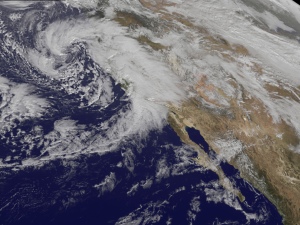 With California’s rainy season shaping up as an unusually wet one, thanks to recent storms, the California Department of Water Resources is easing up on the spigot.
With California’s rainy season shaping up as an unusually wet one, thanks to recent storms, the California Department of Water Resources is easing up on the spigot.
The department has increased its early projected allocation to cities and farms from 25 percent to 50 percent of the requested water for 2011, pleasing water officials who have seen much lower estimates at this time in previous years.
The early estimates are purposely conservative, and are typically raised as the water outlook becomes clearer, the department said last week.
This year, the department originally estimated that it could deliver 5 percent of requested water, and on Friday increased that amount to 50 percent.
While the storms don’t mean the state’s three-year drought is over, they greatly ease concerns about the supply, water officials said.
20 Dec 2010 Leave a comment
in Contamination Tags: California, California water, chromium, contamination, hexavalent chromium
In 25 of 35 U.S. cities where tap water supplies were tested for hexavalent chromium — deemed likely to cause cancer in humans in a U.S. EPA draft review this year — levels of the chemical exceeded the minimum set by the state of California to protect public health, according to a report released today by an environmental group.
The Environmental Working Group’s (EWG) new findings mark a public flare-up in the behind-the-scenes battle over estimating the carcinogenicity of oral exposure to hexavalent chromium, also referred to as chromium-6. The draft EPA assessment released in September could pave the way for a national drinking-water standard for the chemical, best known for polluting groundwater in Hinkley, Calif., where activist Erin Brockovich won a multimillion-dollar settlement for locals and became a household name.
Recent Comments